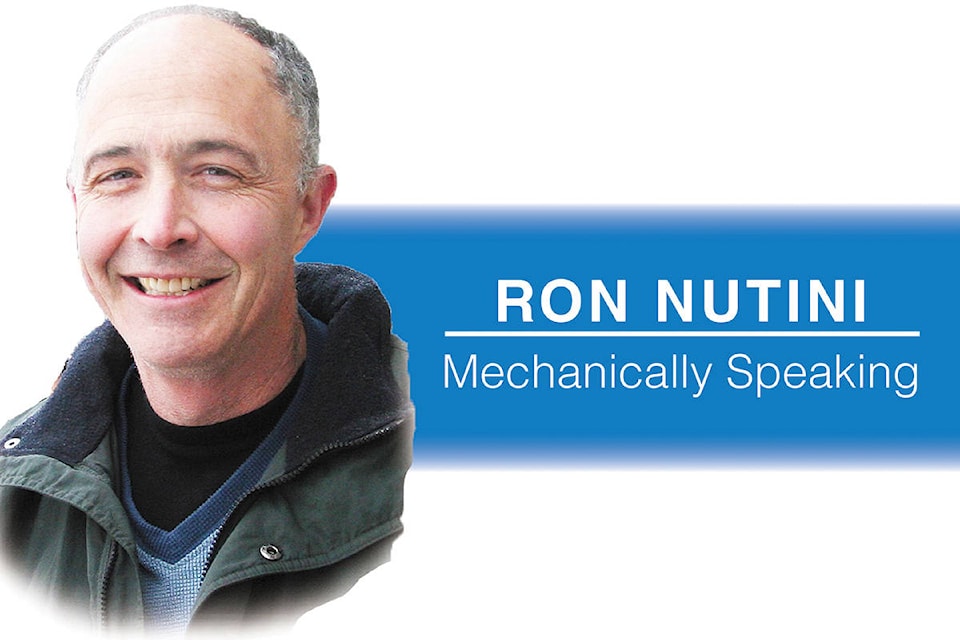I last wrote about TPMS (Tire Pressure Monitoring Systems) in December 2012. At the time more and more vehicles were showing up with these systems. These systems became mandatory in the U.S. in 2008. To this date they are not mandatory in Canada but still may be standard or optional equipment on Canadian vehicles.
The systems have changed very little from original inception. There still are direct and indirect systems. Indirect systems use the anti-lock braking wheel speed sensor signals at each wheel to infer tire pressure based on rotational characteristics. Tires with less air pressure in them rotate faster than tires with more air pressure. A low tire has a smaller rotational circumference. When all your tires lose pressure at the same rate modern indirect tire pressure monitoring systems recognize that all the tires are low by the variation (pulse) in the signal from the wheel speed sensors. A math algorithm (magic) is the science behind this.
Modern direct systems (more common than indirect systems) use radio frequency transmitters placed on the tire valve stem inside each tire. They are battery operated and they report both temperature and pressure. Each sensor has a unique ID that is registered with the computer that is in charge of tire pressure monitoring. When your vehicle is stopped these sensors go into a sleep mode and when they are spinning they periodically report pressure, temperature, and battery condition.
The vehicles employing a tire pressure monitoring system will have a little orange light/symbol (cross section of a tire with and exclamation point in the middle) somewhere on your instrument cluster. If all is good this light comes on when you turn the ignition on as a bulb check and then it should go out. All is good. If the light comes on solid while driving the system has detected a low tire. Stop as soon as you safely can. A low tire can be a completely flat tire. Driving on a flat tire for any distance will ruin it. We all know how much tires cost. Some vehicles will even display the location and pressure of the low tire. On most vehicles do not trust the location reported. Check all the tires. Correct the situation. The required pressures are written on a sticker located on the driver’s door pillar.
Once the tire pressures are all correct your vehicle may have a button or procedure (see the owner’s manual) to initialize the system. This should turn out the light. If you don’t find a procedure just drive away and after a significant drive (can be as long as 20 minutes on some vehicles) the light should go out.
If the TPMS light/symbol begins to flash while driving and then stays on solid there is a problem with the actual system. Typically a sensor has stopped functioning. The inside of a tire is a harsh environment. The sensors are battery operated and those batteries do wear out. There also are wiring, antennas, and computers involved. A trip to your service technician can sort out the trouble for you. Generally special tools and equipment are required to solve TPMS problems.
The onset of winter has inspired this article as many Canadians do not keep their TPMS systems operational. Most of us have an extra set of rims with snow tires on them and many choose not to have tire pressure sensors in their winter wheels and tires. Buying four extra sensors for a vehicle is a significant expense. Each tire change also requires a relearn or rewrite of the sensor IDs into the memory of the TPMS computer system. On many vehicles special tools are required for this process.
As these systems proliferate many parts suppliers have got into the tire pressure sensor business. Some have developed sensors that are easily cloned to have the same IDs as your other sensors. When you switch between summer and winter tires your vehicle does not know any better. The cloning procedure requires special tools but it is a one time operation. The price of these sensors is competitive and therefore dropping.
Keeping a valuable safety system functioning is now a little easier and cheaper.
Trail’s Ron Nutini is a licensed automotive technician and graduate of mechanical engineering from UBC. E-mail: nutechauto@telus.net
